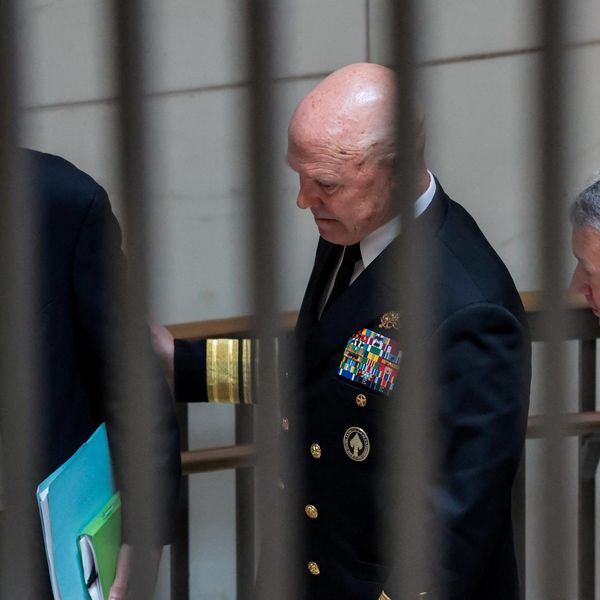In the wake of two decades of post-9/11 military interventions, much has been written in these pages and elsewhere on ways to limit America's impulsive resort to military force abroad. However, between the broadly written congressional 2001 and 2002 authorizations for the use of military force and the executive branch's increasingly liberal interpretation of the president's Article II authority, future military adventurism still appears probable. And simply electing a president from a different party has not curtailed American interventions, as the military has become the tool of first resort by both political parties.
In economic theory, the relationship between the American people and the president's use of force abroad can be described as a principal-agent problem. Principal-agent problems often cause moral hazards that manifest when the agent is not acting in the principal's best interests, oftentimes, due to asymmetry in information and unbeknownst to the principal.
Examples of principal-agent problems are plentiful within foreign aid programs due to the layers of agents involved, each with disparate goals and objectives that oftentimes are at odds with the donor organizations.
In American civil-military relations, the American people (the principal) have shown a general indifference toward our elected leaders' (the agents) foreign policy decisions and the use of the military in elective conflicts like the Iraq War or in the execution of the badly managed Afghanistan War. In the case of the deleterious wars in Iraq and Afghanistan, presidents from both parties made the political calculation that staying the failed course in both countries, year-after-year, was less politically risky, and in their personal interests, than ending them.
So, what can the American people do to realign their dysfunctional principal-agent relationship and drive better foreign policy decisions? I recommend a mix of agent constraints and principal incentives, none of which are sufficient alone. Collectively, these remedies will reduce the current mismatch between principal-agent interests and bend the government's decision to use military force to a painstakingly sobering one of last resort.
First, the Senate should follow the House's lead and pass legislation to repeal the 2002 AUMF. This law authorized the invasion of Iraq in 2003 by "...defend[ing] the national security of the United States against the continuing threat posed by Iraq." Saddam is long-gone and the government of Iraq no longer poses a threat to the United States. Additionally, Congress should repeal and replace the 2001 AUMF with a more narrowly defined bill, explicitly citing the terrorist groups, countries, and criteria sanctioning future military operations. The 2001 bill was passed to authorize military action against the 9/11 perpetrators but has since been used to justify military operations in more than a dozen countries against disparate terrorist groups that have only peripheral ties to al-Qaida and the 9/11 attacks.
Critics may say this will overly curtail the president’s ability to protect Americans from national security threats such as ISIS, which still emanate from Iraq and elsewhere. However, even without the AUMFs, the president still has inherent Article II authority to protect America's interests and conduct military operations to counter imminent threats. Even a significant scoping of the 2001 AUMF will not fully curtail the president's prerogative to protect Americans from a terrorist attack. Therefore, this first step by Congress is necessary but not nearly sufficient.
Second, and arguably more contentious, Congress should introduce legislation requiring a limited form of conscription within today's all-volunteer force — specifically, up to 10 percent of the total force. When presidents send the military into combat, the most impacted groups are intergenerational military families from a small cluster of southern states and low income young Americans for whom the military offers a path to economic security. Conscription would benefit society by bringing traditionally under-represented voices (i.e., upper socio-economic classes from the Northeast and Midwest) into the military and public discourse on the use of military force. Also, such a policy would compel every American to consider the consequences, and share the disincentives of war, since everyone's son or daughter could be selected for military service. For many Americans untouched by our wars, such a policy would change the trajectory of their experience from a remote phenomenon affecting only a small sliver of families to an intimate issue, spurring public engagement on war-waging decisions.
Critics of this proposal might retort that America's conscription experience during Vietnam proved too detrimental to military readiness and unit cohesion. However, the circumstances were quite different. During the Vietnam era, roughly one quarter of the total force was drafted with many more Americans volunteering first to avoid being drafted and sent to frontline infantry units. We need to move the public dialogue beyond the Manichean arguments over conscription and focus on how to effectively strike the right balance between military effectiveness and the social imperative. A limited conscription, perhaps a small fraction of the Vietnam era program, would increase broad-based civic engagement while only marginally impacting overall military readiness.
Third, we need to close the civil-military knowledge gap by teaching the good, the bad, and the ugly of military interventions in public schools and through civics education. Far too many Americans have only a video game appreciation for military operations and the complexities of war. Therefore, the purpose here is not to forge future foreign policy or defense experts, rather to empower all Americans with a knowledge baseline and enough familiarity and confidence to vociferously dissent when elected officials and generals are proposing reckless ideas. As a society, we need to get to the point where the citizen with no military ties, living hundreds of miles from the nearest military base, has the same sureness to speak up, as a member of the military, veteran, or family member living outside the front gates of Fort Benning.
Last, every American should clearly understand their personal financial contributions to past and current wars through a "war tax" line item on pay stubs and annual tax statements. Since the September 11 attacks, the U.S. government has spent $2.2 trillion to finance the wars in Afghanistan and Iraq. The cost of interest will add an additional $2.1 trillion by 2030.
Therefore, a war tax should encompass all spending and associated interest with our foreign wars, including the billions of dollars attendant with veterans' medical and disability needs. A war tax will offer a bi-weekly and annual reminder that these war related costs are tangible and real for all Americans. It will also force Americans, struggling to pay the rent, put food on the table or provide for other basic necessities, to contemplate whether these wars are worth the cost and painful tradeoffs.
Prussian military theorist Carl Von Clausewitz described three dominant elements in war that are commonly understood as the people, the government, and the armed forces. Simply put, the people provide the passion and resolve necessary for the government to wage war. In America's case, we the people have collectively forsaken to understand and own these imbroglios, while allowing self-interested politicians and generals to run them unscrupulously. We need to incentivize the American people to become more actively engaged in decisions on war and peace through increased "skin in the game." Only in doing so can we begin to pull the reins back on incessant and needless war.
The views expressed in this article are those of the author and do not necessarily reflect the official policy or position of the Army, the Department of Defense or the U.S. Government.
















